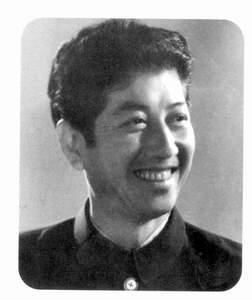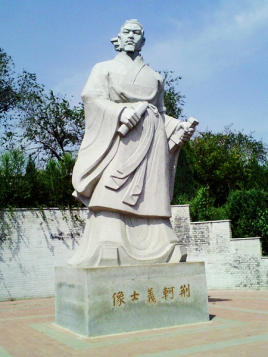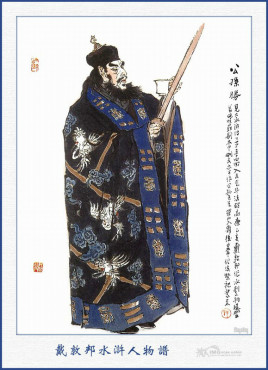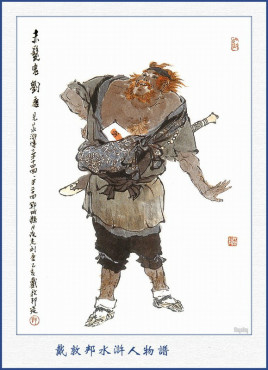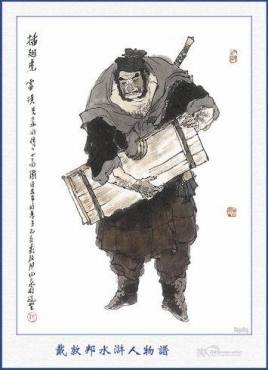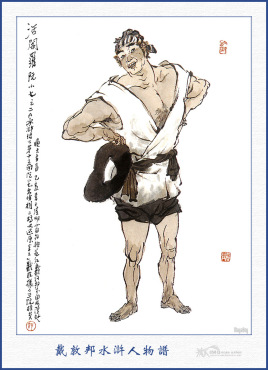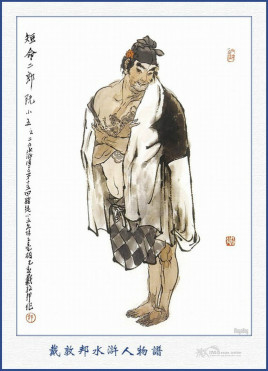jane austen是属于哪个文学时期
Jane Austen 的作品属于现实主义时期 (19世纪30年代 - 1918)。
虽然Jane Austen (1775 - 1817)生活在浪漫主义诗歌层出的时代(1798 - 1832),但她的作品,如傲慢与偏见、理智与情感、爱玛,一扫风行一时的假浪漫主义潮流,继承和发展了英国18世纪优秀的现实主义传统,为19世纪现实主义小说的高潮做了准备。虽然其作品反映的广度和深度有限,但对改变当时小说创作中的庸俗风气起了好的作用,在英国小说的发展史上有承上启下的意义,被誉为地位“可与莎士比亚平起平坐”的作家。
她的作品通过绅士太太们的日常对话交际来反映出了当时的社会百态,用幽默的语言来讽刺了惟利是图、爱慕虚荣的现象,通过喜剧性的场面嘲讽人们的愚蠢、自私、势利和盲目自信等可鄙可笑的弱点,这些显然是属于现实文学的特点。

简爱英文怎么读。
1、Jane 读:英 [dʒeɪn] ,美 [dʒeɪn]
n. 简(女子名)
[网络短语]
Jane 少女,珍,简
Jane Austen 简·奥斯汀,简·奥斯丁,简·奥斯丁
Jane Eyre 简爱,简·爱,情调轻音乐
2、例句:
Jane save up pieces of cloth to make a quilt.
简存了几段布留做棉被用。
He is going to marry Jane in May.
他打算五月和简结婚。
3、词汇搭配
Jane Doe 法律文件中对某一假定...
Jane Crow 对妇女的歧视...
Calamity Jane Calamity J... Dick and Jane books 恋爱小说
Aunt Jane 珍妮大婶
简奥斯丁的英语介绍
Jane Austen (16 December 1775 – 18 July 1817) was an English novelist whose realism, biting social commentary and masterful use of free indirect speech, burlesque and irony have earned her a place as one of the most widely read and most beloved writers in English literature.[1]
Austen lived her entire life as part of a small and close-knit family located on the lower fringes of English gentry.[2] She was educated primarily by her father and older brothers as well as through her own reading. The steadfast support of her family was critical to Austen's development as a professional writer.[3] Austen's artistic apprenticeship lasted from her teenage years until she was about thirty-five years old. During this period, she wrote three major novels and began a fourth.[B] From 1811 until 1815, with the release of Sense and Sensibility (1811), Pride and Prejudice (1813), Mansfield Park (1814) and Emma (1815), she achieved success as a published writer. She wrote two additional novels, Northanger Abbey and Persuasion, both published after her death in 1817, and began a third, which was eventually titled Sanditon, but died before completing it.
Austen's works critique the novels of sensibility of the second half of the eighteenth century and are part of the transition to nineteenth-century realism.[4][C] Austen's plots, though fundamentally comic,[5] highlight the dependence of women on marriage to secure social standing and economic security.[6] Like those of Samuel Johnson, one of the strongest influences on her writing, her works are concerned with moral issues.[7]
During her lifetime, Austen's works brought her little fame and only a few positive reviews. Through the mid-nineteenth century, her novels were admired only by a literary elite. However, the publication of her nephew's A Memoir of Jane Austen in 1869 introduced her life and works to a wider public. By the 1940s, Austen was firmly ensconced in academia as a "great English writer", and the second half of the twentieth century saw a proliferation of Austen scholarship that explored many aspects of her novels: artistic, ideological, and historical. In popular culture, a Janeite fan culture has developed, centred on Austen's life, her works, and the various film and television adaptations of them.
Family
Jane Austen's father, George Austen (1731–1805), and his wife, Cassandra (1739–1827), were members of substantial gentry families.[13] George was descended from a family of woollen manufacturers which had risen through the professions to the lower ranks of the landed gentry.[14] Cassandra was a member of the prominent Leigh family.[15] From 1765 until 1801, that is, for much of Jane's life, George Austen served as the rector of the Anglican parishes at Steventon, Hampshire and a nearby village. From 1773 until 1796, he supplemented this income by farming and by teaching three or four boys at a time who boarded at his home.[16]
Austen's immediate family was large: six brothers—James (1765–1819), George (1766–1838), Edward (1767–1852), Henry Thomas (1771–1850), Francis William (Frank) (1774-1865), Charles John (1779–1852)—and one sister, Cassandra Elizabeth (1773–1845), who, like Jane, died unmarried. Cassandra was Austen's closest friend and confidante throughout her life.[17] Of her brothers, Austen felt closest to Henry, who became a banker and, after his bank failed, an Anglican clergyman. Henry was also his sister's literary agent. His large circle of friends and acquaintances in London included bankers, merchants, publishers, painters, and actors: he provided Austen with a view of social worlds not normally visible from a small parish in rural Hampshire.[18] George was sent to live with a local family at a young age because, as Austen biographer Le Faye describes it, he was "mentally abnormal and subject to fits".[19] He may also have been deaf and dumb.[20] Charles and Frank served in the navy, both rising to the rank of admiral. Edward was brought up by his second cousin Thomas Knight, eventually inheriting Knight's estate and taking his name.[21]
Steventon rectory, as depicted in A Memoir of Jane Austen, was in a valley and surrounded by meadows.[22]
[edit] Early life and education
Austen was born on 16 December 1775 at Steventon rectory and publicly christened on 5 April 1776.[23] After a few months at home, her mother placed Austen with a woman living in a nearby village who nursed and raised Austen for a year or eighteen months.[24] In 1783, according to family tradition, Jane and Cassandra were sent to Oxford to be educated by Mrs Ann Cawley and they moved with her to Southampton later in the year. Both girls caught typhus and Jane nearly died.[25] Austen was subsequently educated at home, until leaving for boarding school with her sister Cassandra early in 1785. The school curriculum probably included some French, spelling, needlework, dancing and music and, perhaps, drama. By December 1786, Jane and Cassandra had returned home because the Austens could not afford to send both of their daughters to school.[26] Austen acquired the remainder of her education by reading books, guided by her father and her brothers James and Henry.[27] George Austen apparently gave his daughters unfettered access to his large and varied library, was tolerant of Austen's sometimes risqué experiments in writing, and provided both sisters with expensive paper and other materials for their writing and drawing.[28] According to Park Honan, a biographer of Austen, life in the Austen home was lived in "an open, amused, easy intellectual atmosphere" where the ideas of those with whom the Austens might disagree politically or socially were considered and discussed.[29] After returning from school in 1786, Austen "never again lived anywhere beyond the bounds of her immediate family environment".[30]
Private theatricals were also a part of Austen's education. From when she was seven until she was thirteen, the family and close friends staged a series of plays, including Richard Sheridan's The Rivals (1775) and David Garrick's Bon Ton. While the details are unknown, Austen would certainly have joined in these activities, as a spectator at first and as a participant when she was older.[31] Most of the plays were comedies, which suggests one way in which Austen's comedic and satirical gifts were cultivated.[32]
Portrait of Henry IV. Declaredly written by "a partial, prejudiced ignorant Historian", The History of England was illustrated by Austen's sister Cassandra (c. 1790).
[edit] Juvenilia
Perhaps as early as 1787, Austen began to write poems, stories, and plays for her own and her family's amusement.[33] Austen later compiled "fair copies" of 29 of these early works into three bound notebooks, now referred to as the Juvenilia, containing pieces originally written between 1787 and 1793.[34] There is manuscript evidence that Austen continued to work on these pieces as late as the period 1809–11, and that her niece and nephew, Anna and James Edward Austen, made further additions as late as 1814.[35] Among these works are a satirical novel in letters entitled Love and Freindship [sic], in which she mocked popular novels of sensibility,[36] and The History of England, a manuscript of 34 pages accompanied by 13 watercolour miniatures by her sister Cassandra. Austen's "History" parodied popular historical writing, particularly Oliver Goldsmith's History of England (1764).[37] Austen wrote, for example: "Henry the 4th ascended the throne of England much to his own satisfaction in the year 1399, after having prevailed on his cousin predecessor Richard the 2nd, to resign it to him, to retire for the rest of his Life to Pomfret Castle, where he happened to be murdered."[38] Austen's Juvenilia are often, according to scholar Richard Jenkyns, "boisterous" and "anarchic"; he compares them to the work of eighteenth-century novelist Laurence Sterne and the twentieth-century comedy group Monty Python.[39]
[edit] Adulthood
As Austen grew into adulthood, she continued to live at her parents' home, carrying out those activities normal for women of her age and social standing: she practiced the pianoforte, assisted her sister and mother with supervising servants, and attended female relatives during childbirth and older relatives on their deathbeds.[40] She sent short pieces of writing to her newborn nieces Fanny Catherine and Jane Anna Elizabeth.[41] Austen was particularly proud of her accomplishments as a seamstress.[42] She also attended church regularly, socialized frequently with friends and neighbours, and read novels—often of her own composition—aloud with her family in the evenings. Socializing with the neighbours often meant dancing, either impromptu in someone's home after supper or at the balls held regularly at the assembly rooms in the town hall.[43] Her brother Henry later said that "Jane was fond of dancing, and excelled in it".[44]
In 1793, Austen began and then abandoned a short play, later entitled Sir Charles Grandison or the happy Man, a comedy in 6 acts, which she returned to and completed around 1800. This was a short parody of various school textbook abridgments of Austen's favourite contemporary novel, The History of Sir Charles Grandison (1753), by Samuel Richardson.[45] Honan speculates that at some point not long after writing Love and Freindship [sic] in 1789, Austen decided to "write for profit, to make stories her central effort", that is, to become a professional writer.[46] Whenever she made that decision, beginning in about 1793, Austen began to write longer, more sophisticated works.[47]
During the period between 1793 and 1795, Austen wrote Lady Susan, a short epistolary novel, usually described as her most ambitious and sophisticated early work.[48] It is unlike any of Austen's other works. Austen biographer Claire Tomalin describes the heroine of the novella as a sexual predator who uses her intelligence and charm to manipulate, betray, and abuse her victims, whether lovers, friends or family. Tomalin writes: "Told in letters, it is as neatly plotted as a play, and as cynical in tone as any of the most outrageous of the Restoration dramatists who may have provided some of her inspiration....It stands alone in Austen's work as a study of an adult woman whose intelligence and force of character are greater than those of anyone she encounters."[49]
[edit] Early novels
After finishing Lady Susan, Austen attempted her first full-length novel—Elinor and Marianne. Her sister Cassandra later remembered that it was read to the family "before 1796" and was told through a series of letters. Without surviving original manuscripts, there is no way to know how much of the original draft survived in the novel published in 1811 as Sense and Sensibility.[50]
Thomas Langlois Lefroy, Lord Chief Justice of Ireland, by W. H. Mote (1855); in old age, Lefroy admitted to a nephew that he had been in love with Jane Austen: "It was boyish love."[51]When Austen was twenty-one Tom Lefroy, a nephew of neighbours, visited Steventon from December 1795 to January 1796. He had just finished a university degree and was moving to London to train as a barrister. Lefroy and Austen would have been introduced at a ball or other neighbourhood social gathering, and it is clear from Austen's letters to Cassandra that they spent considerable time together: "I am almost afraid to tell you how my Irish friend and I behaved. Imagine to yourself everything most profligate and shocking in the way of dancing and sitting down together."[52] The Lefroy family intervened and sent him away at the end of January. Marriage was impractical, as both Lefroy and Austen must have known. Neither had any money, and he was dependent on a great-uncle in Ireland to finance his education and establish his legal career. If Tom Lefroy later visited Hampshire, he was carefully kept away from the Austens, and Jane Austen never saw him again.[53]
Austen began work on a second novel, First Impressions, in 1796 and completed the initial draft in August 1797 when she was only 21. (it would later become Pride and Prejudice); as with all of her novels, Austen read the work aloud to her family as she was working on it and it became an "established favourite".[54] At this time, her father made the first attempt to publish one of her novels. In November 1797, George Austen wrote to Thomas Cadell, an established publisher in London, to ask if he would consider publishing "a Manuscript Novel, comprised in three Vols. about the length of Miss Burney's Evelina" (First Impressions) at the author's financial risk. Cadell quickly returned Mr. Austen's letter, marked "Declined by Return of Post". Austen may not have known of her father's efforts.[55] Following the completion of First Impressions, Austen returned to Elinor and Marianne and from November 1797 until mid-1798, revised it heavily; she eliminated the epistolary format in favour of third-person narration and produced something close to Sense and Sensibility.[56]
During the middle of 1798, after finishing revisions of Elinor and Marianne, Austen began writing a third novel with the working title Susan—later Northanger Abbey—a satire on the popular Gothic novel.[57] Austen completed her work about a year later. In early 1803, Henry Austen offered Susan to Benjamin Crosby, a London publisher, who paid £10 for the copyright. Crosby promised early publication and went so far as to advertise the book publicly as being "in the press", but did nothing more. The manuscript remained in Crosby's hands, unpublished, until Austen repurchased the copyright from him in 1816.[58]
简奥斯丁简介英汉互译的
简·奥斯汀简介
简·奥斯汀,是英国著名女性小说家,她的作品主要关注乡绅家庭女性的婚姻生活,以女性特有的细致入微的观察力和活泼风趣的文字真实地描绘了她周围世界的小天地。
中文名:简·奥斯汀
外文名:Jane Austen
国籍:英国
出生地:英国斯蒂文顿小镇
出生日期:1775年12月16日
逝世日期:
1817年7月18日
职业:小说家
主要成就:
写了很多脍炙人口的世界名著
代表作品:《理智与情感》《傲慢与偏见》《爱玛》《劝导》
奥斯汀终身未婚,家道小康。由于居住在乡村小镇,接触到的是中小地主、牧师等人
简·奥斯汀
物以及他们恬静、舒适的生活环境,因此她的作品里没有重大的社会矛盾。她以女性特有的细致入微的观察力,真实地描绘了她周围世界的小天地,尤其是绅士淑女间的婚姻和爱情风波。她的作品格调轻松诙谐,富有喜剧性冲突,深受读者欢迎。从18世纪末到19世纪初,庸俗无聊的“感伤小说”和“哥特小说”充斥英国文坛,而奥斯汀的小说破旧立新,一反常规地展现了当时尚未受到资本主义工业革命冲击的英国乡村中产阶级的日常生活和田园风光。她的作品往往通过喜剧性的场面嘲讽人们的愚蠢、自私、势利和盲目自信等可鄙可笑的弱点。奥斯汀的小说出现在19世纪初叶,一扫风行一时的假浪漫主义潮流,继承和发展了英国18世纪优秀的现实主义传统,为19世纪现实主义小说的高潮做了准备。虽然其作品反映的广度和深度有限,但她的作品如“两寸牙雕”,从一个小窗口中窥视到整个社会形态和人情世故,对改变当时小说创作中的庸俗风气起了好的
作用,在英国小说的发展史上有承上启下的意义,被誉为地位“可与莎士比亚平起平坐”的作家。
JaneAusten
JaneAusten is a famous British female novelist, her work has focused primarily onthe squire family female marriage life, to female specific nuanced observationand lively and humorous text truly depicts the one's own little world in heraround the world.
JaneAusten.
Foreignname: Austen Jane
Nationality:British
Birthplace:Steven Don Town, UK
Dateof birth: December 16, 1775
Dateof death:
July18, 1817
Occupation:novelist
Mainachievement:
Writea lot of world famous masterpiece
Representativeworks: "sense and sensibility" in "Pride and Prejudice""Emma" "Persuasion"
Austenwas unmarried, a well-to-do family. Because of living in the rural town, accessto the middle and small landlords, priests and others
JaneAusten
Aswell as their quiet and comfortable living environment, there is no significantsocial contradiction in her works. She to the female specific nuancedobservation, truly depicts the one's own little world in her around the world,especially among ladies and gentlemen in marriage and love affair. Her workstyle is relaxed and humorous, full of comedy conflict, popular with readers.From the end of the 18th century to the beginning of the 19th century, vulgarand boring "sentimental novel" and the "Gothic novel" fullof British literary scene, and Austen iconoclastic, an anti conventional showedwere not affected by the impact of capitalist industrial revolution of Britishcountryside middle class daily life and pastoral scenery. She often worksthrough the comic scenes of people ridiculed the stupid, selfish, snobbish andblind confidence as contemptible ridiculous weakness. Austin'snovel appeared in the early part of the 19th century, all the rage swept offthe tide of romanticism, inherited and developed in Britain in the 18th century outstandingrealist tradition, the climax of the realistic novels in the nineteenthcentury. Although the works reflect the breadth and depth of the limited, buther works such as "two inches ivory, from a small window peep to the wholesociety to form and worldly wisdom, then to change the vulgar ethos in thecreation of the novel the good
Roleas a connecting link in the history of the development of the English novel,was hailed as the status "on an equal footing with Shakespeare"writer.
傲慢与偏见的作者Jane Austin的英文简介
具体如下:
简·奥斯汀(Jane Austen,1775年12月16日—1817年7月18日),英国女小说家,主要作品有《傲慢与偏见》、《理智与情感》等。
简·奥斯汀21岁时写成她的第一部小说,题名《最初的印象》,她与出版商联系出版,没有结果。就在这一年,她又开始写《埃莉诺与玛丽安》,以后她又写《诺桑觉寺》,于1799年写完。十几年后,《最初的印象》经过改写,换名为《傲慢与偏见》,《埃莉诺与玛丽安》经过改写,换名为《理智与情感》,分别得到出版。
至于《诺桑觉寺》,作者生前没有出书。以上这三部是奥斯汀前期作品,写于她的故乡史蒂文顿。她的后期作品同样也是三部:《曼斯菲尔德庄园》、《爱玛》和《劝导》,都是作者迁居乔顿以后所作。
《劝导》因为作者对原来的结局不满意,要重写,没有出版过。她病逝以后,哥哥亨利·奥斯汀负责出版了《诺桑觉寺》和《劝导》,并且第一次用了简·奥斯汀这个真名。
Jane Austen的《傲慢与偏见》究竟想告诉我们什么?
我觉得傲慢与偏见,更想表达的就是平等,每个女性内心都应该追求自己内心想要的东西,而不是说被客观的事实所羁绊。其实在傲慢与偏见可以看出,这部作品更多的是对当时那个封建社会的一种讽刺。
女主角
这部作品中个人是比较喜欢女主,他是一个很有自己主见的人,而且是一个比较有智慧的人。用现在话来说就是情商比较高的一个人,但是我觉得不能忍的就是在知道自己的妹妹和渣男结婚之后,并没有说按照自己的想法去提出反对的意见。其实我觉得在这里,傲慢与偏见去展现的就是当时那个社会的一些情况,然后也是对当时社会情况的一种讽刺。
封建思想
其实在整部作品中,可以展现出很多当时的一个封建时代的一些封建思想,就像在得知自己的女儿嫁给了一个渣男之后,并没有会感到为女儿感到难过,或者是阻止这件事情,反而会觉得女儿嫁出去才是最重要的事情,其实这应该是对于他们来说是残忍的一件事情。其实那个封建社会应该说父亲也不会去过度的关心自己女儿,也是在暗指重男轻女的那个封建思想。
女性自主
这部作品中是采用比较直接的方式,把当时那个社会中女性面临的一些问题直接展现给读者去看。他们没有得到很高的教育,也没有得到很好的价值观。作者想展现给我们的就是在拥有了自己自主权的人才能有权利,有资格去追求自己真正的幸福。
